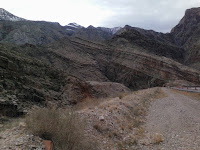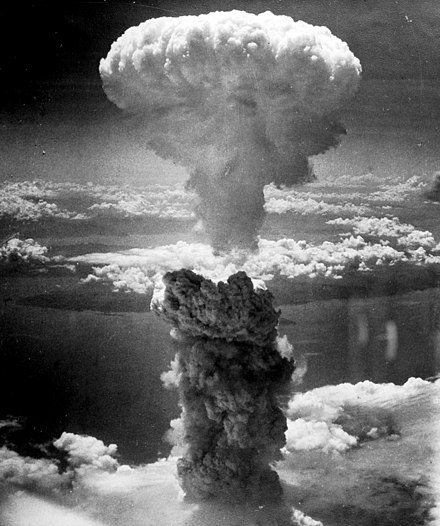Science Fiction and Fantasy is about world building more than about anything else. I mean this in the sense that once the author has made the decision to move the setting outside the realm of an accepted consensus of "normal", that world has to be described and presented.
This is also true of historical fiction or fiction that takes place outside of the audience's realm of experience. Describing the other takes a different prose representation than describing the same. But, for this post, I'm limiting the discussion to worlds that must be built. I.e., they don't exist in the normal frame of reference at all.
I'll dispose of it quickly: it's pretty much impossible.
What we end up doing, instead, is creating analogs of a built world and describe them in terms we would use to describe the world of our current understanding. For example, we can't describe a world based on mantis shrimp's perception of millions of color combinations or from the point of view of a cuttlefish's distributed perception. What we can do in that case is either create an analog-- a stand in for human perception-- or describe something that a human being would find as odd and lean on the oddness to present the world.
We don't just do it in fiction. We do it in the real world all the time. And then we borrow that ability to present a built world in fiction.
In our genre, the place is a character just like any other and must be
as rigorously built and considered in the same way. And we do it by
comparing it to our world. Unfortunately, we commonly do not use the
amazing differences in geography and location available in our real for
inspiration.
This was brought home to me in my recent Nevada trip.
For example, take this picture on the left.
This is a small tree we found in Valley of Fire. We ended up finding it all over Nevada. It's a gray shrub that has little life to show. It has green leaves at various parts of the plant but it largely looks dead.
Except, of course, that violent growth in the center of the picture with fruit. The branch structure is different. There are flowers. Fruiting bodies. It looks like an epiphyte parasite.
In point of fact that's exactly what we thought it was until we examined it more closely and realized the red branches were growing out of the dead looking gray branches. Was it a disease? A fungus that hijacked the plant?
Our conclusion was that it was the reproductive component of the plant. Normal leaves were produced for photosynthesis. But when conditions were right, the plant went nuts and produced the material you see. In some cases it really looked like the plant had been consumed.
Another example is shown at left. This is also in the Valley of Fire. In this case, the geology is truly bizarre.
Normally, we think of things getting mixed together. Basalt mixed with sandstone. However, here the red, yellow and gray sections of the area are combined and kept separate. The colors aren't as distinct as they should be but the demarcations are as sharp as if drawn.
Think of the mountains we see in Tolkein. Or in Kipling's Kim. We have a preconception of how they should look and the authors leave us to that. However, this photograph shows how different that preconception can be from reality.
This one comes from Utah.
Again, this is a different sort of mountain than is normally pictured in the common perception. Fossils are found neatly popping out of strata like that. The fact of finding bones or shells just in the dirt have an influence on people's thinking. We should capture that in our fiction.
Regional fiction often captures this sort of thing well. Southwest fiction, for example, presents the desert and water completely differently from fiction back east. And if you read many of the writers of the northwest, rain is a constant companion.
My point here is that the world building we do must necessarily reflect our own earth to some degree-- how could it not? It's our singular experience. That said, our own earth is wonderfully varied. So should be our fiction.
Sunday, January 31, 2016
Sunday, January 24, 2016
Fossils and Atomic Testing in Nevada
(Picture from here.)
I wrote this on the trip back and promptly fell quite sick. So it's going up now.
Today is the last day of our vacation in Nevada.
I’m writing this in the waiting area for our flight from Las Vegas back to
Boston.
It’s been a good trip though probably not to
everyone’s taste. We stayed in Mesquite rather than Las Vegas. Didn’t visit any
of the casinos save for one fairly miserable experience where we had dinner
there and had to cut our way through the smoke to the buffet. Not recommended.
We spent most of our time hiking around the area
looking for neat rocks and fossils.
A few interesting facts about Nevada:
- 87% of the state is owned by the federal government and administered by the Bureau of Land Management, the agency that manages federal land that isn’t parks and other sorts of whatnot. (Note, BLM rules change from state to state so what is true in Nevada might not be true in Utah.)
- The BLM allows up to 250 pounds of rocks and fossils if they’re not to be sold
- The BLM restricts vertebrate fossils. (A permit is required.) Non-vertebrate fossils are just fine.
- Petrified wood is not considered a fossil.
- The BLM has very nice maps that show you the different land ownership types such as BLM land, private or park land.
That’s the good news. The bad news is that the
area was having the coldest winter in twenty years and the high country had
significant snow—two to four inches in some places. Since we’re from New
England, the bad news wasn’t all that bad.
Nevada is interesting geologically. Some of the
uplifted rocks were laid down in the Cambrian so there are trilobite and other
like fossils. Other areas were underwater during the time in the Jurassic so
there are ichthyosaurs and the like. I didn’t research if there were dinosaur
fossils in the state but I suspect there are. A lot of petrified wood.
It’s also interesting in that there is an
abundance of volcanic events amidst the sedimentary rock. Often, you’ll be
walking along a cut and see disintegrating mud underneath gravel underneath
shale underneath basalt. A wash is the result of water flowing down the
mountains and exiting down the valley. Often, you might find chalcedony,
jasper, mud rock, and shale all mixed together. On one slope we found ammonites
next to a pale, opalescent chalcedony. We brought home both.
We did do a few things that were not entirely rock
collecting oriented. We did some hiking in Zion Park in Utah—highly
recommended—and visited Hoover Dam. Also recommended.
We also visited the Atomic Testing Museum.
This was very
cool.
I grew up in the fifties where we went to bed
thinking wondering where we would hide if the nuclear bombs dropped. One of the
movies shown in the museum had the “duck and cover” song, which made me a bit
nervous.
There were a couple of things that this museum
highlighted. One was that the people who were testing atomic weapons were
absolutely sincere in thinking they were doing the right thing and protecting
their country. To them this was not mere jingoistic patriotism. They considered
the Soviet Union a very real and credible threat. The weapons stockpiles were
important in maintaining peace between the nations. Whether this is, in fact,
true or not is something that I’m not going to debate here.
A lot of times when you hear people talk about
such things, there’s a sense that they’re trying to convince themselves. I got
this feeling when I heard Robert McNamara talk about Viet Nam or Richard Cheney
talk about Iraq. The people talking about what happened in the National Test
Facility didn’t have a qualm about what they did at the time.
Part of this was they also now have a clear idea of the
mistakes they made. Fallout yields were miscalculated. Energy release was
underestimated. Bomb safety was not well characterized. None of this was due to
incompetence. It was because this was all new. Much of the early testing took
place in less than a decade since the nuclear explosions in Nagasaki and
Hiroshima. No one really knew what was going to happen. Many of the
interviewees acknowledged this and would have preferred waiting. It was just
they didn’t feel they had the time. They have regrets that some things fell the
way they did but have no regrets on their actions.
For example, in the sixties some incidents caused
them to execute a safety review of the bombs themselves. It turns out that the
way they were built, the bombs wanted
to explode. They redesigned the bombs and warheads so they could be stored
safely.
This is all up front in the museum. One gets the
impression that the people who run the NTF feel they need hide nothing.
We live in an age where people hide acts executed
in all good conscience lest they be subject to modern criticism. It’s refreshing to
watch people saying, yeah: we would have told people to take shelter in the
area for a couple of days after the bomb blast because we blew hell out of the
ozone layer and it took three days or so for it to grow back. But we didn’t
know. We would still have tested the
bombs because we didn’t know squat about them back then. We would have just
done it differently.
It was also a different perspective to see how
people in Nevada viewed such things. I was living in California most of that
time. We ducked and covered in the classrooms in case war came. But, in Las
Vegas, people saw the flash. There
were hundreds of tests in Nevada, many above ground. Every time an above ground
test happened, it was seen across much of the state. In California, we were
scared of something amorphous. In Nevada, they saw it every few months.
Then, back to the hills and looking for rocks and
fossils.
We ended up with about 100 pounds of rock holding
down every counter in the hotel room. Fifty pounds were our addition to the
adjacent rock garden but the remaining 50 pounds needed to be shipped. We ended
up purchasing a sturdy suitcase in Walmart and paying $25 for a check on. We
heard, “what do you have in here? Rocks?” more than once. We just smiled and
gave them our credit card.
So, now it’s back to work and writing and other
stuff. I’ll get back to the Green Revolution before long. We haven’t even
gotten to Darwin’s abominable mystery: flowering plants.
Subscribe to:
Posts (Atom)







